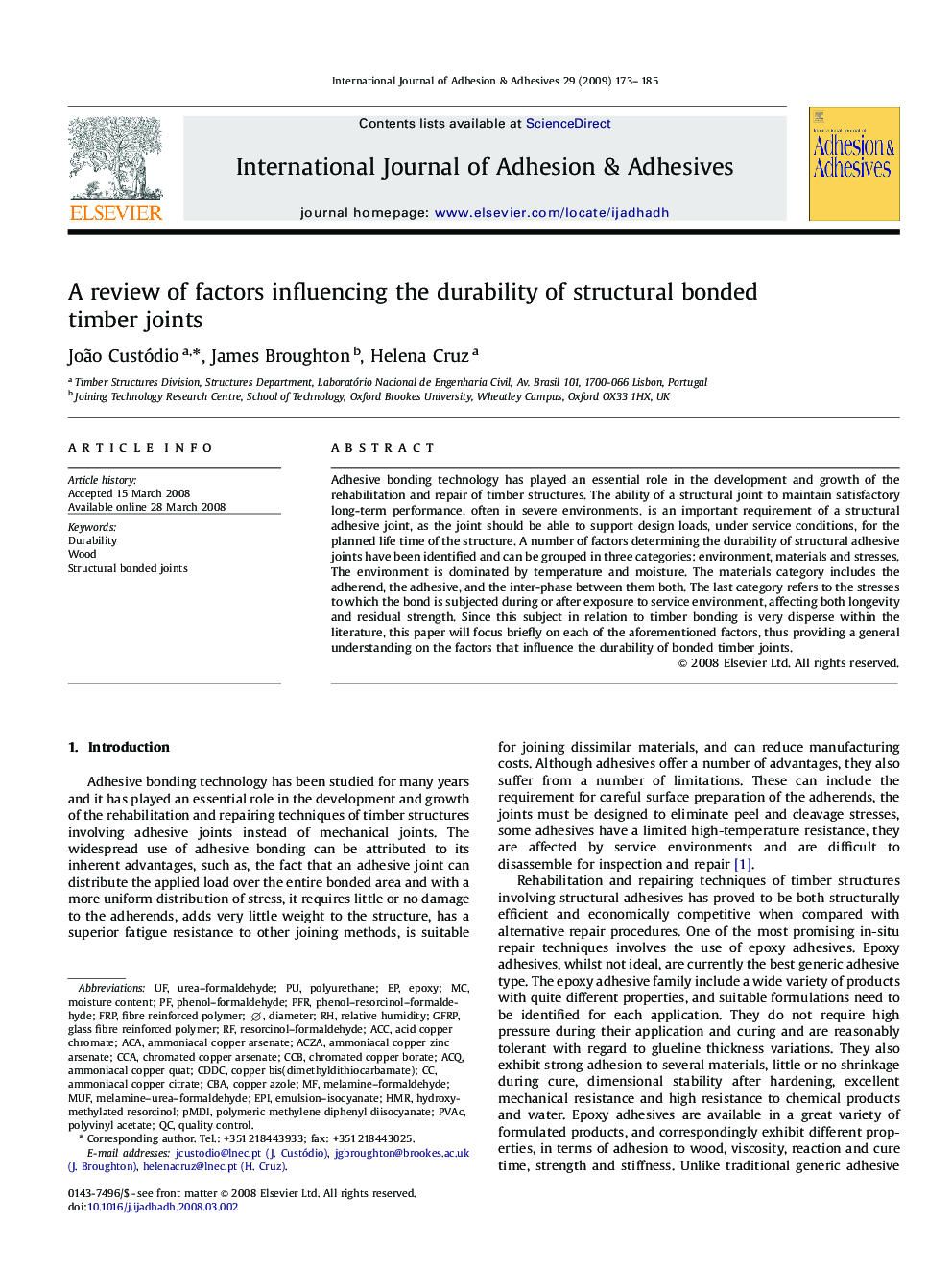| Article ID | Journal | Published Year | Pages | File Type |
|---|---|---|---|---|
| 777456 | International Journal of Adhesion and Adhesives | 2009 | 13 Pages |
Adhesive bonding technology has played an essential role in the development and growth of the rehabilitation and repair of timber structures. The ability of a structural joint to maintain satisfactory long-term performance, often in severe environments, is an important requirement of a structural adhesive joint, as the joint should be able to support design loads, under service conditions, for the planned life time of the structure. A number of factors determining the durability of structural adhesive joints have been identified and can be grouped in three categories: environment, materials and stresses. The environment is dominated by temperature and moisture. The materials category includes the adherend, the adhesive, and the inter-phase between them both. The last category refers to the stresses to which the bond is subjected during or after exposure to service environment, affecting both longevity and residual strength. Since this subject in relation to timber bonding is very disperse within the literature, this paper will focus briefly on each of the aforementioned factors, thus providing a general understanding on the factors that influence the durability of bonded timber joints.
